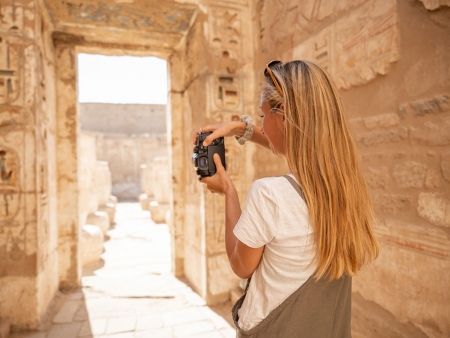-
Home
- Egypt
- Wiki Travel
- Egypt Pyramids
- Pyramid of lahun | Egypt Pyramids
Pyramid of lahun | Egypt Pyramids
Lahun is the name of a modern village located near the opening of the Hawara Channel from the Nile Valley into the Fayum basin. Explore more about Lahun Pyramid with Memphis Tours!

Location:
Illahun is the name of a modern village located near the opening of the Hawara Channel from the Nile Valley into the Fayum basin. This is the location that Sesostris II chose for his funerary monument, a choice that stresses the growing importance of the Fayum oasis during the early 12th Dynasty.
Who built it?
This pyramid was built by Sesostris II
Why was it built?
This pyramid was built as the ancient Egyptians believe in resurrection.Sesostris II was buried in this pyramid according to the ancient Egyptian concept of life after death.
Explanation:
Sesostris II continued the innovative way of building his pyramid started by his predecessors. This is not only clear in the building technique that was used, but also in the ground plan of the pyramid and its surrounding complex, which deviates drastically from the 5th Dynasty and 6th Dynasty stereotype.
The pyramid was built around a core of yellow limestone, around which radial and cross walls were built. This formed a framework of relatively small compartments that were filled with mud bricks.
The inner structure of the pyramid is completely different from any of the predecessors' pyramids. Contrary to older pyramids, this monument's entrance is not located in the north, but at the bottom of a narrow shaft located near its southeast corner. The entrance shaft was too narrow for the sarcophagus, so a second wider shaft was dug into the ground at some distance to the south. This second shaft was then hidden beneath a sloping passage to the tomb of an unidentified princess.
The entrance shaft opens into a horizontal corridor which runs north to a hall with a vaulted ceiling. In the east of this hall, there is a well dug into the floor. It is not known how deep this well runs, but it is likely that it reached groundwater level. This would have allowed the pit to be filled with some groundwater, which the Ancient Egyptians considered to be the primeval water out of which creation had come into being. By allowing some of this primeval water into the pyramid, the king himself would be able to spring into being as well. This feature has also been found in some tombs of the Valley of the Kings in Thebes , dated some 300 or 400 years after Sesostris II.
That this well was not a way to trick potential tomb robbers is clear from the fact that the corridor that leads to the burial chamber continues, sloping up at a slight angle, along the west of the vaulted hall. Underneath the pyramid, a first chamber opens to the west of this corridor, while the corridor continues towards an antechamber which opens at a right angle to the west.
The burial chamber continues along the axis of the antechamber. Clad entirely in granite and with a garbled roof, it measures 5 by 3 metres and is 3 metres high. The red granite sarcophagus was placed at the far end of the burial chamber.
A small chamber opens to the south of the burial chamber. It is here that the only remains of the burial were found: a golden uraeus that once adorned the king's head and some leg bones, perhaps the king's.
A passage in the north wall loops around the burial chamber and enters the antechamber in the south. This unique feature is thought to symbolise the king's departure to the north and his re-emergance in the pyramid to the east of the burial chamber. It is also possible that it was created to symbolically make an island out of the burial chamber, which is an important aspect in the cult of Osiris, the god of the dead and of resurrection.
The pyramid complex
The inner enclosure wall was made of limestone and was decorated with niches in a way that is strongly reminiscent of the enclosure wall of Netjerikhet's complex. An outer enclosure wall was made out of mudbrick. Rows of trees were planted parallel to it, probably also a reference to the cult of Osiris.
Against the north wall within the outer enclosure, there were eigth mastabas, intended as tombs for some princesses. In the north eastern corner, there is a small pyramid. The entrance to this 18 metres high pyramid has never been found. It has been suggested that it was either a Queen's pyramid or a satellite pyramid and it is possible that it only served a symbolic purpose.
The causeway leading to this complex has never been investigated. The Valley Temple is now completely destroyed.
Egypt Travel Guide
Egypt Oases
- Gara Cave
- Al-Deer
- Badr's Museum
- Bagawat
- Black desert
- Cleopatra bath
- Great Sand Sea
- Mizawaka
- Monastery of Anba Bishoy
- Mountain of the Dead in Siwa | Gebel al-Mawta
- Qarun Lake
- Roman Temple in Deir El-hagar
- Temple of Alexander the Great
- Temple of Amon
- Temple of Dush
- Temple of Hibis
- Temple of Nadura
- The Crystal Mountain | Bahariya Crystal Mountain
- The Monastery of Abu Makar (Makarios) | Egypt
- The Monastery of Baramus | Egypt
- The Monastery of El Suryan | Cairo Attractions
- Therapy in Siwa Oasis
- Valley of Al-Haiz
- Valley of the Golden Mummies
- Wadi Al- Rayan, Protected Area | Fayoum, Egypt
- Wadi El-Natroun | The Monasteries of Wadi El Natrun
- The White Desert in Egypt
- Fayoum Bird-watching Guide
Ports of Call
Red Sea and Sinai
Famous Mosques in Egypt
Transportation guide in Egypt
Egypt Tourist Attractions
Egypt Pyramids
- Djedefre Pyramid | Abu Rawash
- Abu Sir | Egyptian Necropolis & Pyramids
- King Snefru's Pyramid | Egypt
- Old Kingdom Pyramids | Ancient Egypt
- Pyramid Complex of Pepi I
- Pyramid of Amenemhat III
- Pyramid of lahun | Egypt Pyramids
- Pyramid of Meidum
- Pyramid of Neferhetepes | Egypt Pyramids
- Pyramid of Netjerkhet | Egypt Pyramids
- Pyramid of Neferefre
- Pyramid of Sahure | Egypt Pyramids
- Pyramid of Sekhemkhet
- Pyramid of Sesostris III
- Pyramid of Teti | Egypt Pyramids
- Pyramid of Userkaf | Egypt Pyramids
History of Egypt
- The False Doors | Ancient Egypt Secrets
- Egyptian Canopic Jars: What are Canopic Jars?
- Holy Family in Egypt
- king khufu (Cheops) | Kings of Ancient Egypt
- Khafre Statue | King Khafre Pyramid
- Who built the first pyramid in Egypt
- Menkaure (Mykerinos) Pyramid | King Menkaure
- Ramesses IV | Ramses iv Tomb
- Ramses IX Tomb
- The Divine Triad of Dendera
Aswan Attractions
Luxor Attractions
Alexandria Attractions
Cairo Attractions
- Famous Bab al Futuh
- Al-Tannoura Egyptian Heritage Dance Troupe
- Saints Sergius and Bacchus Church
- Abusir Pyramids & The City of The Dead Egypt
- Agricultural Museum Egypt, Cairo
- AL Fustat Historical City
- Bab El Nasr Cairo City Gate
- Beit Al Sennari or Al Sennari House in Cairo
- The Cairo Tower
- Birqash Camel Market in Cairo
- Coptic Cathedral in Abbasiya
- Egyptian Museum Guide
- El Mosky Cairo | Bazaars & Souks
- King Tutankhamun Treasures: Inside the World of Egypt’s Most Famous Pharaoh
- The Mosque of Muhammad Ali Pasha in Cairo
- Royal Mummy Room in The Egyptian Museum
- The Pharaonic Village
- The Great Sphinx of Giza
- Babylon Fortress Facts
- Solar Boat Museum
- Valley Temple of Khafre
- St Mary Egypt Orthodox Church
- Verdi Aida Opera Show in Giza Pyramids Egypt
Combine the rich heritage of Cairo with a magical 5-day Nile cruise on this Egypt vacation package—a must for any lover of history. Follow the path of the pharaohs in Cairo, then fly continue the path in Luxor, and Aswan.
Plan Your Trip!
You Might Also Like

ABU- Rawash, located in the continuation of Gebel el-Ghigiga. The western fringe of the Nile Valley (30°2'N,3l°4'E).

ABU-SIR, an archaeological locality on the western bank of the Nile River, approximately 25kilometers ( 15 miles) southwest of Cairo.

A site on the western bank of the Nile River; 65 kilometers south of Cairo. A step Mastaba and a royal cemetery were constructed there from the transitional years of the third to fourth dynasty.

Archaeologists have made many valuable discoveries in this area. We have the Saqqara complex, located 1.6 km inward from the escarpment where wooden bas-reliefs were found in the offering room of the mastaba of the high functionary Hesire.

Pepi I , the first king of the 6th Dynasty, had built his pyramid complex South Saqqara . His two immediate predecessors, Unas and Teti, Know More!
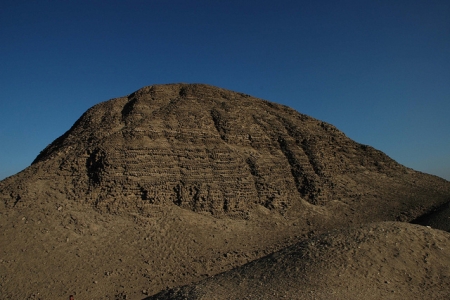
This pyramids owes its name to the fact that its core was made of white limestone. It has suffered a lot from stone robbers. Know more!

Lahun is the name of a modern village located near the opening of the Hawara Channel from the Nile Valley into the Fayum basin. Explore more about Lahun Pyramid with Memphis Tours!

It is located at medium, 80 km to the South of Memphis, on the Westbank of the Nile, to the East of Lake Moris and the Fayum oasis.

The pyramid is located about 100m south of Userkaf's pyramid, which is located at Sakkara. It was built for Neferhetepes who was a queen of Userkaf.
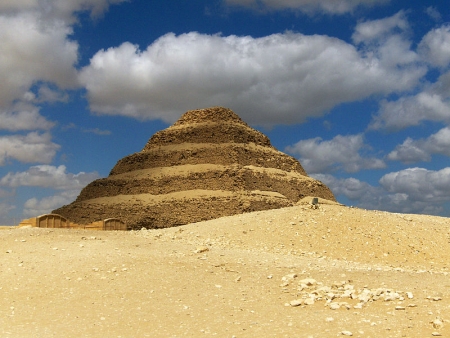
Standing 60 meters high, Netjerikhet's Step Pyramid, the oldest pyramid-like monument built in Egypt, was the centerpiece not only of the Netjerikhet complex but of the entire Saqqara area.
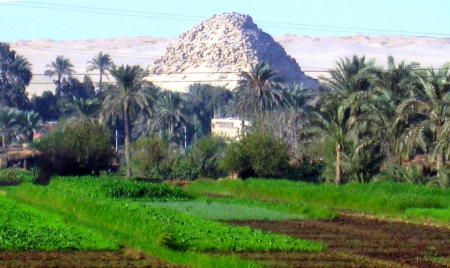
Recognize the story of Neferefre Pyramid through Memphis Tours! This pyramid is located at Abusir. It was built by King Raneferef, also known as Neferefre, who ruled for 3 or 4 years only during the 5th Dynasty.
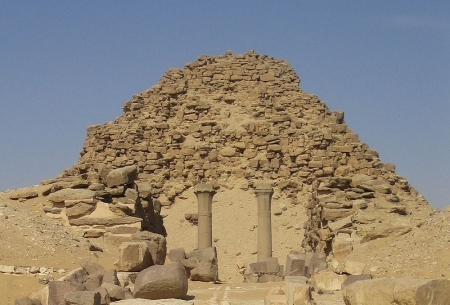
Sahure constructed the first pyramid at Abusir. A great many extremely beautiful high reliefs were found here by Borchardt when he excavated in 1902-1908.

Pyramid of Sekhemkhet is located just southwest of the pyramid of Unas, at Sakkara. It was built by Sekhemkhet, who was a pharaoh of the 3rd Dynasty and ruled for about 9 years. Explore Sekhemkhet now with Memphis Tours!

Located at Dahshur, Pyramid of Sesostris III is at some distance to the Northeast of Snofru's Red Pyramid. Know more!

Located in Central Saqqara just south of the 1st dynasty mastabas and northeast of Userkaf's pyramid, Pyramid of Teti was built by Teti, the first king of the 6th dynasty who ruled Egypt for some 32 years.

The local description for the the pyramid is el-haram el-makherbish "ruined pyramid". The pyramid is not on the tourist track and requires a 30 minute track through the soft sand from the step pyramid to reach.

